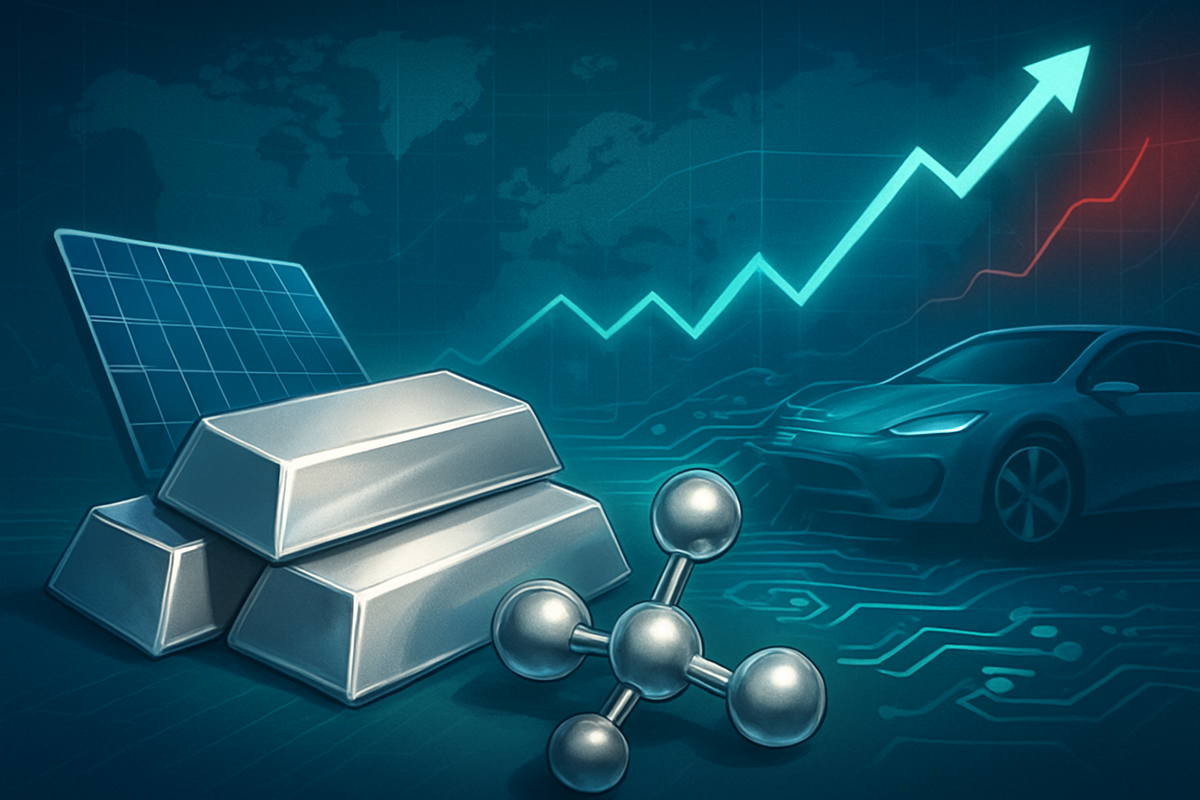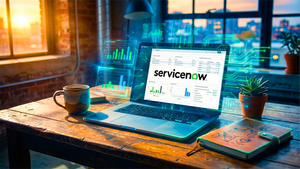
The global silver market is currently in the throes of an unprecedented boom in November 2025, with prices reaching new all-time highs. This remarkable surge is driven by a confluence of factors, including persistent supply deficits, robust industrial demand from green technologies, and heightened investment interest fueled by geopolitical tensions and inflation concerns. The immediate implication is a highly volatile market offering significant opportunities and risks, while solidifying silver's position as both a critical industrial metal and a coveted safe-haven asset.
This extraordinary rally has seen silver outperform both gold and the S&P 500 year-to-date, with the white metal peaking at $54.48 per troy ounce on October 17th and again at $54.42 on November 14th. This impressive performance is rooted in a structural market imbalance, marking the fifth consecutive year of supply deficit. Projections for 2025 range from 95 to 117.6 million ounces, contributing to a cumulative shortfall nearing 820 million ounces since 2021. This ongoing imbalance is exacerbated by an inelastic supply response, as over 70% of silver production comes as a byproduct of mining other metals, making it difficult for supply to quickly adapt to rising demand. Mine output remains stagnant due to declining ore grades, rising costs, and geopolitical disruptions, suggesting deficits could persist for years.
The surge is primarily fueled by insatiable industrial demand, particularly from green technologies. The solar/photovoltaics (PV) industry is consuming silver at an all-time high, with demand projected to increase by 15-20% in 2025. Projections suggest solar energy alone could consume 85-98% of current global silver reserves by 2050. Furthermore, silver's superior conductivity makes it indispensable in electronics, semiconductors, and the expanding 5G, AI, and IoT sectors, with industrial usage now accounting for over 50% of total demand. The burgeoning Electric Vehicle (EV) market also contributes significantly, tripling silver consumption in automotive applications over the next decade.
Investment demand provides another strong pillar, as silver is increasingly sought after as a safe-haven asset and a hedge against inflation and economic uncertainty. Institutional investors are recognizing silver as a standalone asset class, evidenced by significant inflows into silver-backed Exchange Traded Products (ETPs), which saw an approximate 18% increase in holdings by early November 2025. Geopolitical tensions, US trade policies, and concerns about national debt further bolster silver's appeal, especially with its classification by the US government as a "critical raw material." Expectations of Federal Reserve interest rate cuts later in 2025 are also making non-yielding assets like silver more attractive, supported by a weaker US dollar and the strong performance of gold, which is trading around $4,000 per ounce.
The immediate market reactions include heightened volatility, with intraday price swings frequently exceeding 4%, and periods of profit-taking after reaching record highs. Despite the strong price development, global silver demand in 2025 is projected to decrease by approximately 4% to 1.12 billion ounces, with segments like jewelry and silverware expected to decline due to record high local currency prices. Soaring silver prices are also prompting "thrifting" in the industrial sector, where manufacturers reduce silver usage per unit, though this is partially offset by gains in AI and EV markets.
Companies Navigating the Silver Wave: Winners and Losers
The unabated silver boom presents a clear dichotomy for public companies, creating significant opportunities for producers and investment vehicles, while posing cost challenges for industrial users.
Silver mining companies, particularly primary silver producers and those with significant silver byproduct, are direct beneficiaries. Higher silver prices directly translate to increased revenues and improved profit margins. Pan American Silver Corp. (PAAS; NYSE, TSX), one of the world's largest primary silver producers, directly benefits from the increased value of its primary product, boosting revenue and improving net income. Similarly, First Majestic Silver Corp. (AG; NYSE, TSX), with its wholly-owned silver-producing mines in Mexico, sees its profitability soar with higher silver prices, amplified by record quarterly production in Q3 2025. Streaming companies like Wheaton Precious Metals Corp. (WPM; NYSE, TSX) also win big, as their fixed, low acquisition costs for silver mean wider profit margins on every ounce streamed, offering exposure to price upside without direct operational risks. Other significant beneficiaries include Hecla Mining Company (HL; NYSE), the largest U.S. silver producer, and Fresnillo PLC (FRES; LSE), the world's largest primary silver producer by volume.
For investors seeking exposure without direct mining operations, specialized investment vehicles are thriving. The iShares Silver Trust (SLV; ARCA), the largest silver ETF, directly benefits as the value of its underlying physical silver holdings increases. The Sprott Physical Silver Trust (PSLV; ARCA, TSX) also appreciates in value, appealing to those seeking physical redemption options. Furthermore, the Global X Silver Miners ETF (SIL; ARCA) provides diversified exposure to the increased profitability of silver mining companies.
Conversely, companies that utilize silver as a significant raw material in their manufacturing processes face rising production costs. First Solar, Inc. (FSLR; NASDAQ), a leading solar panel manufacturer, could see increased material costs if these cannot be fully passed on to consumers, potentially compressing profit margins, despite its thin-film technology offering some insulation compared to traditional silicon PV. Major electronics manufacturers, such as Apple Inc. (AAPL; NASDAQ), rely on silver for various components in their products. A silver boom leads to higher raw material costs, and given the competitive nature of the consumer electronics market, passing these costs directly to consumers can be challenging, potentially squeezing profit margins or forcing innovation in "thrifting" (reducing silver content). Similarly, automotive manufacturers like Tesla, Inc. (TSLA; NASDAQ) and General Motors Company (GM; NYSE), especially those heavily invested in EV production (where vehicles use significantly more silver), will face increased material costs, putting pressure on their margins or vehicle pricing. Their ability to mitigate these impacts through pricing power, innovation, or substitution will determine their ultimate financial outcome.
Broader Significance: A Confluence of Trends and Policy Shifts
The silver boom of November 2025 is not an isolated event but rather deeply embedded within broader industry trends, signaling profound shifts in global economics, technology, and geopolitics. Its wider significance extends across various sectors, influencing policy, fostering innovation, and drawing parallels to historical market dynamics.
At its core, the current surge is intrinsically linked to the global green energy revolution. Silver is indispensable for solar photovoltaic (PV) panels, with each gigawatt requiring approximately 1.5 tons of the metal. As global solar installations are projected to exceed 500 gigawatts annually by 2030, this sector alone could demand 250 million ounces of silver per year. The accelerating adoption of Electric Vehicles (EVs) further amplifies demand, with EVs using two to three times more silver than traditional cars for batteries and electrical connections. Beyond green energy, silver's unmatched electrical conductivity makes it a critical input in advanced electronics, 5G networks, AI data centers, and various technological advancements, with industrial fabrication now accounting for over 55% of total demand. This positions silver not just as a monetary asset but as a strategic industrial commodity essential for future technological progress.
The ripple effects are far-reaching. While silver mining companies are clear beneficiaries, industrial users face the challenge of rising input costs, potentially accelerating efforts to innovate and find cost-effective silver alternatives or "thrift" existing usage. This pressure could spur R&D in materials science and manufacturing processes. The boom also highlights the critical role of refiners and recyclers, as rising demand and tight supply could spur growth in silver recycling from electronic waste, contributing to a more circular economy, though current recycling rates remain low. In the broader precious metals complex, silver's rally often outpaces gold in bull markets due to its smaller market capitalization and dual role, potentially compressing the gold-silver ratio and signaling amplified percentage moves for the white metal. Platinum and palladium also benefit from similar drivers but exhibit different supply-demand dynamics.
Regulatory and policy implications are also emerging. Notably, the U.S. has officially classified silver as a "critical mineral" in November 2025, recognizing its strategic importance for national security. This designation could unlock increased government and private funding for domestic production, refining, and recycling initiatives through federal tax credits and investment programs (e.g., Inflation Reduction Act, Infrastructure Investment and Jobs Act). This status could also lead to trade policies, stockpiling initiatives, and tighter export controls to secure critical supplies. Furthermore, central banks, particularly in BRICS nations, are reportedly increasing their silver reserves, signaling a strategic rebalancing of global financial influence and a potential move towards de-dollarization.
Historically, the current silver surge draws comparisons to events like the Hunt brothers' attempt to corner the market in 1979-1980, which drove prices to a then all-time high of $49.45 per ounce. However, unlike that speculative bubble, the current boom is viewed as more fundamentally driven by robust industrial demand and persistent supply deficits. It also echoes periods of heightened investor demand during economic uncertainty, such as the post-financial crisis era (2008-2011) and the pandemic (2020). Silver's enduring dual nature as both a monetary asset and an industrial commodity has consistently shaped its price history, and the current boom solidifies its new phase as a "growth commodity underpinning the clean energy revolution."
What Comes Next: Navigating a Bullish but Volatile Future
As the silver boom continues to unfold in November 2025, the market is poised for a dynamic future, characterized by both significant opportunities and inherent challenges. The outlook, both short-term and long-term, appears predominantly bullish, albeit with expected volatility.
In the short term, analysts project silver prices to continue their upward trajectory into late 2025 and 2026, with forecasts ranging from $40 to $65 per ounce. This optimism is underpinned by the persistent structural deficit, robust industrial demand from green technologies and electronics, and strengthening investment demand driven by macroeconomic tailwinds such as a weakening U.S. dollar and expectations of Federal Reserve interest rate cuts. Investors should consider silver as a strategic component for portfolio diversification and look for "buy the dip" opportunities, while monitoring the gold-silver ratio for reallocation strategies. Miners will need to prioritize cost efficiency, explore new reserves, and adopt sustainable practices to capitalize on higher prices and address supply constraints. Industrial users, in turn, must focus on supply chain resilience, potentially building larger buffer stocks, and balancing "thrifting" efforts with maintaining product efficiency.
Looking further ahead, towards 2030, the long-term outlook remains largely bullish, with price projections ranging from conservative averages of $56-$63 per ounce to aggressive forecasts reaching $75, $100, $143, or even over $200 per ounce. This sustained growth will be driven by accelerating industrial demand from the green energy transition, EVs, 5G/6G, and AI, coupled with persistent supply constraints due to silver's byproduct status and chronic underinvestment in exploration. Silver will also continue to serve its role as a safe-haven asset against inflation and economic uncertainties. Potential scenarios range from a moderately optimistic base case of steady appreciation to an aggressive bullish "bubble phase" if supply constraints intensify and speculative capital pours in. However, the market is prone to volatility, and temporary corrections could occur if there are significant shifts in speculative positioning or monetary policy, though strong underlying fundamentals are expected to limit the downside.
Comprehensive Wrap-up: Silver's Enduring Significance
The silver boom of 2025 marks a pivotal moment for the precious metal, solidifying its dual identity as both a critical industrial commodity and a resilient safe-haven asset. The year has witnessed an extraordinary rally, with prices soaring to unprecedented levels, driven by a powerful confluence of factors that are set to shape its trajectory for years to come.
Key takeaways from this period include the insatiable industrial demand stemming from the global green energy transition (solar, EVs) and advanced technologies (5G, AI, electronics), which has created record consumption. This demand is met with persistent structural supply deficits, as silver's byproduct nature makes its production inelastic, leading to consecutive years of shortfall. Heightened geopolitical tensions, global economic uncertainties, and expectations of central bank interest rate cuts have further bolstered silver's appeal as a hedge against inflation and a store of value. This has translated into significant inflows from both institutional and retail investors, underpinning the market's robust performance.
Moving forward, the market remains broadly bullish. While short-term volatility and periods of consolidation are natural after such a significant rally, the fundamental drivers suggest continued strength. Analysts' projections for silver prices range widely, but a consensus points towards sustained appreciation, with some aggressive scenarios even forecasting a potential "bubble phase." The lasting impact of this boom is profound: it underscores silver's indispensable role in the future economy, particularly in the clean energy revolution, and reinforces its strategic value in diversified investment portfolios. The long-term implications include potential long-term scarcity due to massive demand projections from solar technology, which could fundamentally alter silver's availability and pricing in the coming decades.
Investors navigating the silver market in the coming months should remain vigilant. Key indicators to watch include central bank monetary policy decisions, global industrial demand trends (especially in solar and EVs), ongoing silver mining supply dynamics, geopolitical stability, and the performance of the US dollar. Technical analysis, particularly monitoring key support and resistance levels, will also be crucial. Given the current elevated prices, financial advisors often suggest a modest allocation (5-10%) of precious metals within a diversified portfolio, and strategies like dollar-cost averaging may help mitigate timing risks. The silver market is dynamic and complex, but its fundamental underpinnings suggest a compelling long-term bullish narrative.
This content is intended for informational purposes only and is not financial advice






